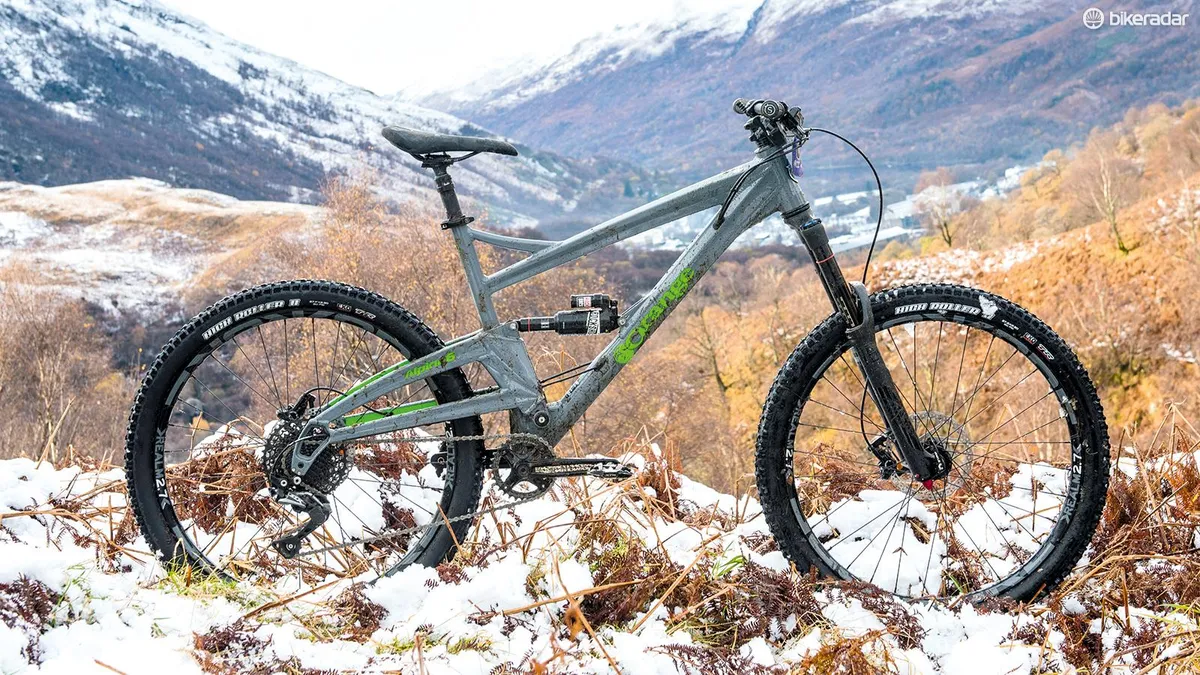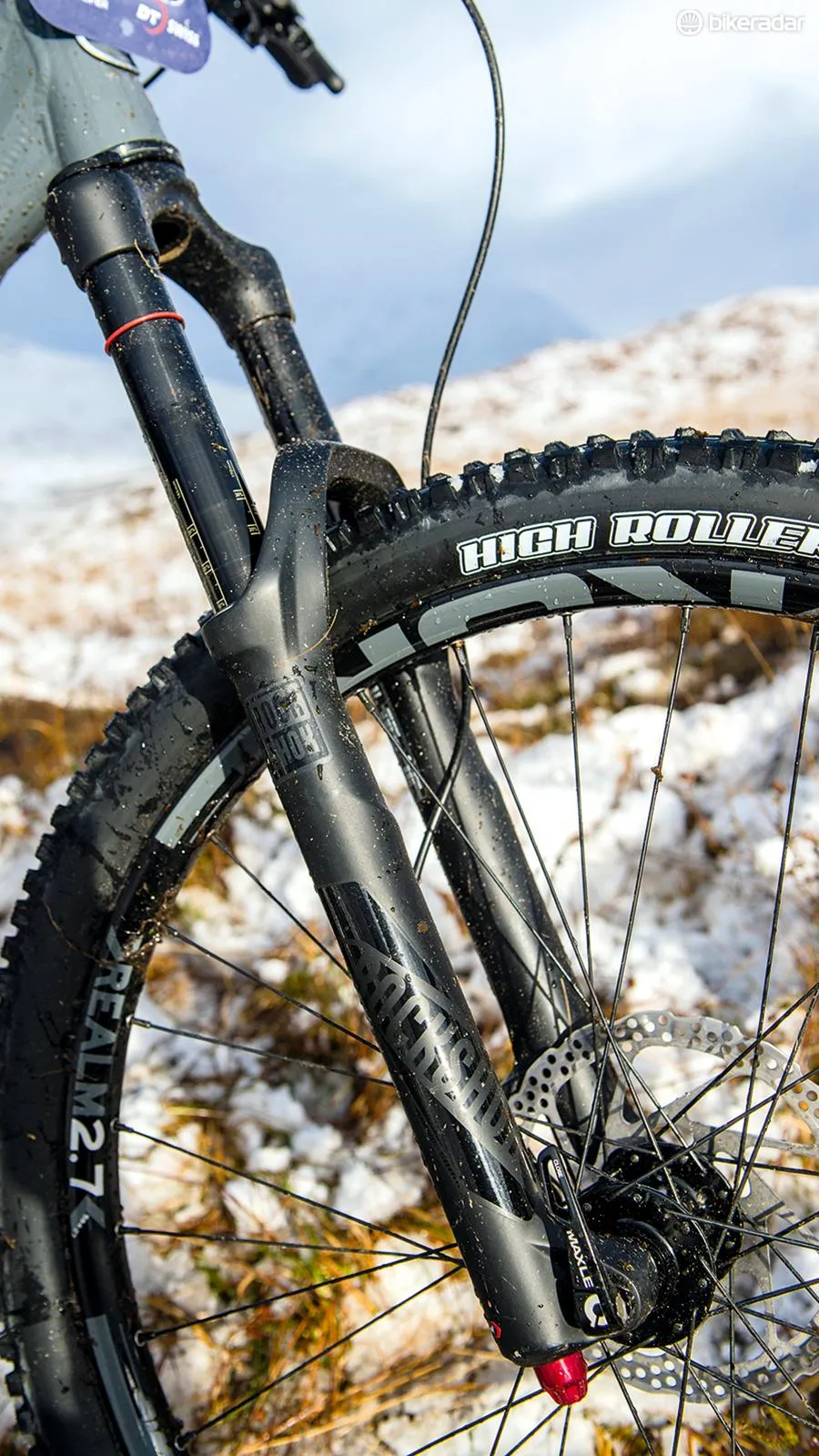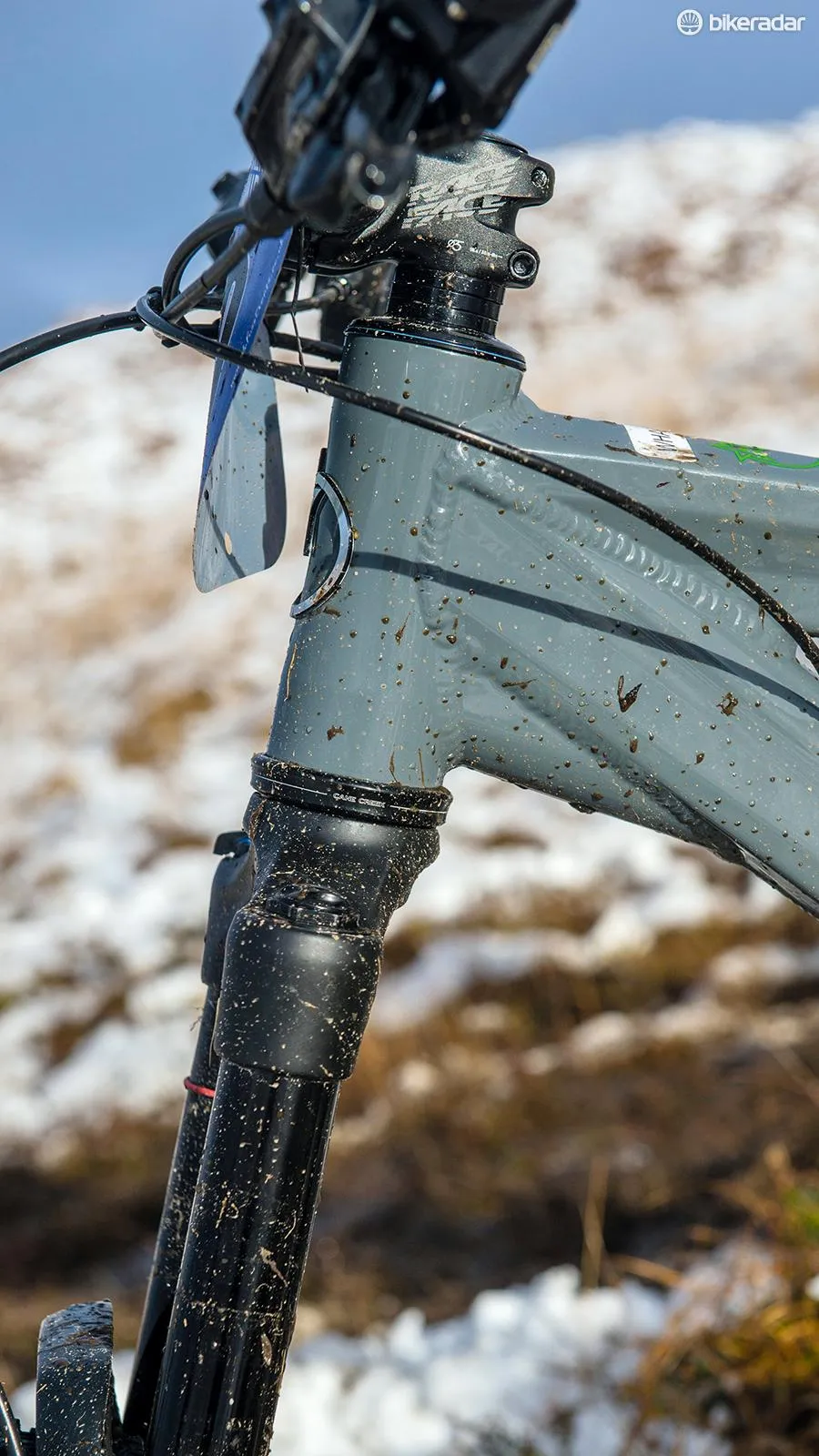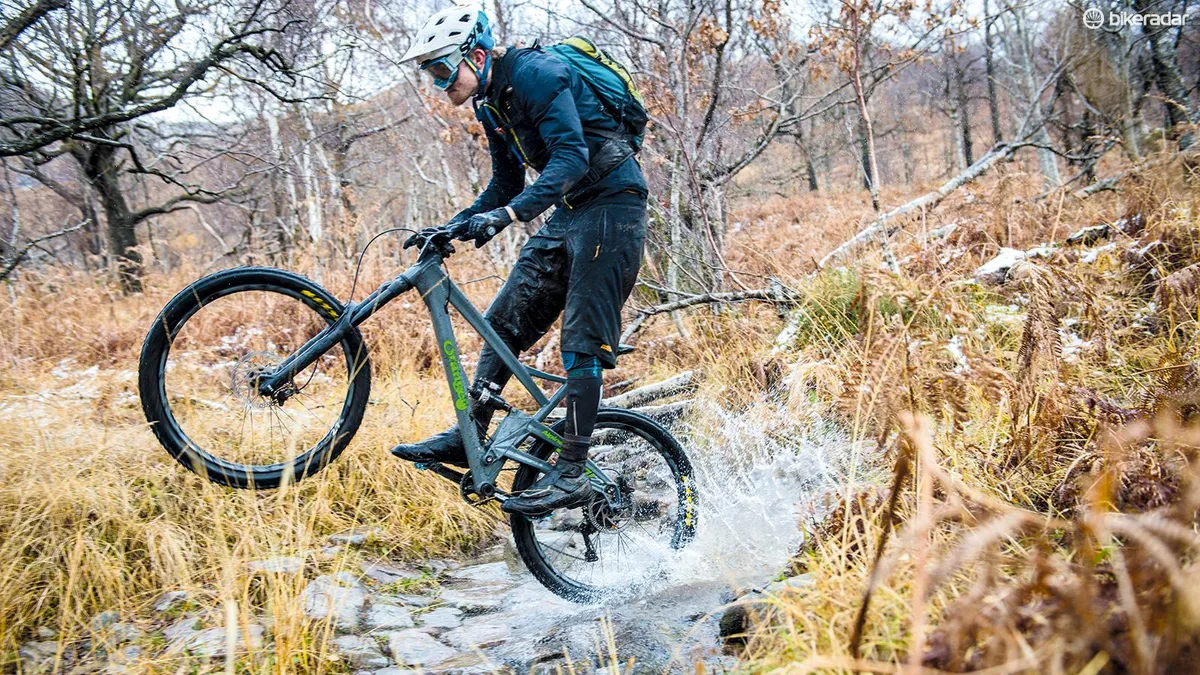Editor's note: The original review of this bike was temporarily taken offline on 11 June following a discussion between BikeRadar testers who, having ridden the bike, held different opinions on its performance. This revised review more accurately reflects the findings of our test team as a whole.
The Alpine 6 replaces Orange’s classic Alpine 160. It’s still made in Halifax and sports 160mm of travel via a tried and tested single-pivot design. The reworked tube set saves a claimed 400g over the Alpine in the XL frame. It’s an evolution of Orange’s distinctive formula.
Perhaps the most important difference between the Alpine 160 and the 6 is a subtle one; the trademark single pivot has been moved higher up the down tube. This higher pivot placement, well above the chain-line, means the chain tension counteracts the suspension’s movement — known as anti-squat.
This ensures suspension bob is minimal when pounding on the pedals, despite the shock’s lack of lockout, resulting in a taut and efficient feel under power.
There is a downside, though. The chain interferes with the suspension’s movement. This results in noticeable pedal-kickback under sudden compressions.
Suspension sensitivity is also compromised when hitting bumps at speed, especially when braking or pedalling. It's these characteristics that mean this bike sure isn't for everyone.
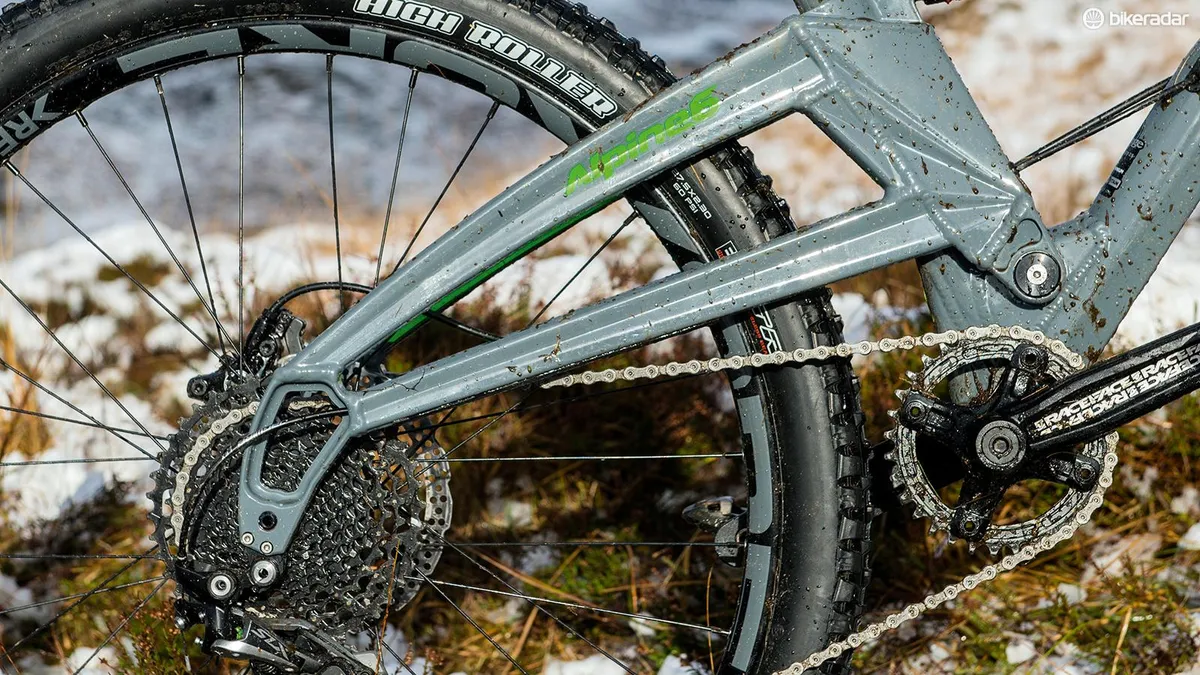
Disabling the derailleur’s clutch improved sensitivity a touch, as the clutch otherwise adds friction to the suspension movement. We also increased sag incrementally to 35 percent, and added just two volume spacers.
The frame feels stiff and responsive in the bends, and the slack head angle keeps things calm when things get out of shape
Even so, the Orange was noticeably jarring over rough ground. It gets hung up on square-edges and loses speed, and braking-bump traction is harder to hold onto. So if you’re more of a point and plough kind of rider, the Alpine probably isn’t for you.
It's hard to say to what extent the stiff frame, simple dampers and high pivot-placement each play a role in the Alpine's harsh trail feel. Although, it is worth mentioning that a second test bike fitted with Fox's Float X Evol Performance damper upgrade did help to smooth things out a little more over the Monarch Plus Debonair shown here.
It’s not that single-pivot is necessarily inferior to more complex designs, but more that the high pivot point sacrifices sensitivity for improved out-of-the-saddle pedalling. A larger chainring (around 36t) may help improve things, but that would affect climbing.
Despite the rough ride, venture into the bike park or ride something a little less gravity orientated and the Orange's ability to carry and generate speed as you work it through each and every trail undulation is really quite astounding — but as any Orange owner will tell you, it’s not exactly stealth-like when the going does get rough. We'd recommend spending some time silencing it before hitting the trails.
Although pedal-bob is kept in check, the 74.5-degree effective seat angle is pretty slack. Combined with the highly sagged suspension setup, this results in a slouched-back and lazy pedalling position when climbing seated, straining the back and hamstrings while making it hard to find traction and resist front wheel lift.
Slack attack
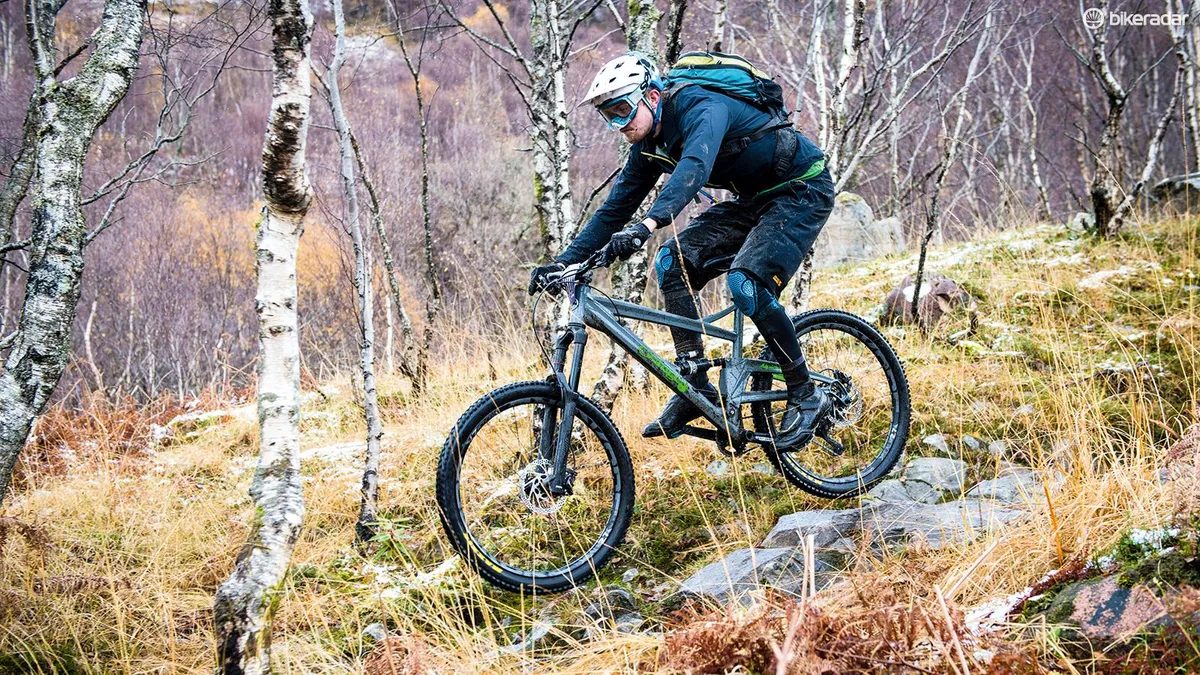
The 6 is a nice shape for descending. We measured the head angle at 65.3 degrees. That’s nearly 1-degree steeper than claimed. The reach is a claimed 478mm in XL, but still just enough for our 6ft 3in tester with a 40mm stem.
The damping was slightly harsher and less supportive than the more sophisticated Pike or Lyrik
The bottom bracket is pretty low at 339mm. All this results in a bike that is happy being pointed down steep, twisty tracks, and relishes being stuffed into rutty corners and berms with real aggression. The frame feels stiff and responsive in the bends, and the slack head angle keeps things calm when things get out of shape.
Orange’s own-brand grips have a large outer collar which force your hands inboard making the 780mm bar feel narrower, and the bar height was low, even with all the spacers beneath the stem. Despite a dropper post allowing us to get our bodies down, we found the bar just too low, affecting confidence on steep, rocky descents.
The ‘S’ model we have here is the cheapest in the Alpine 6 family. Happily, Orange allows you to customise the spec of your bike online. We went for a 170mm Reverb (a £290 upgrade over the stock fixed post), as well as an upgraded Kore wheelset (£20 extra).
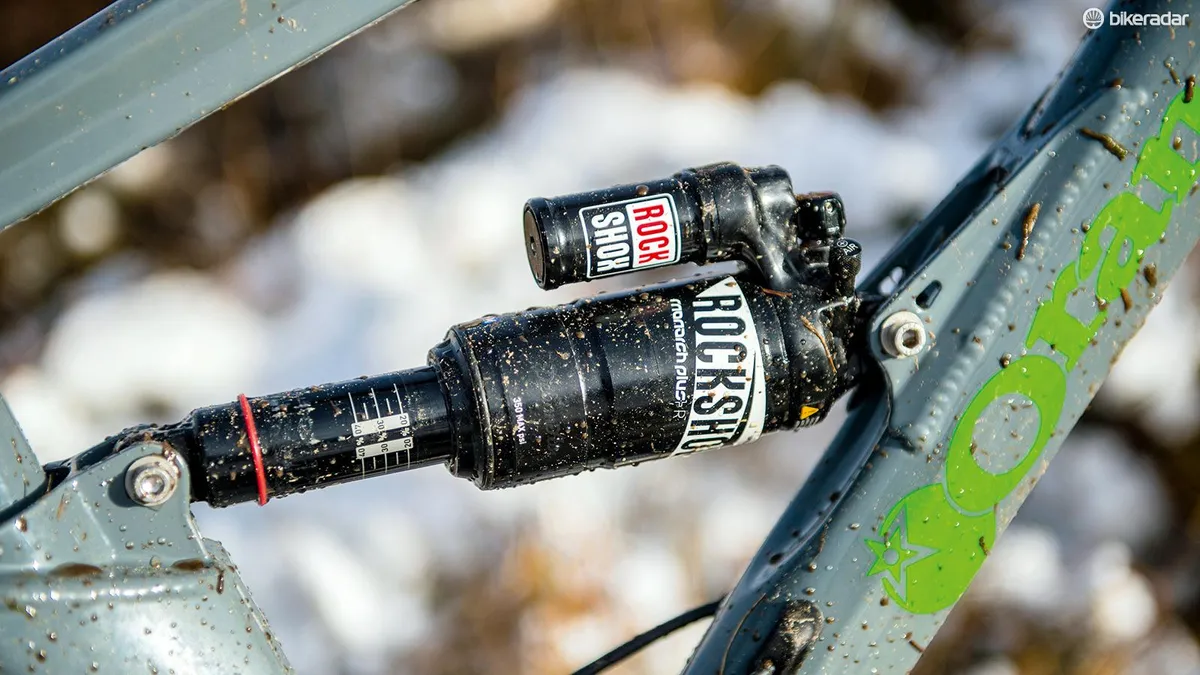
The basic Monarch Plus Debonair shock is a solid choice at the rear, though we’d have liked a lockout.
The Yari fork offers impressive stiffness, allowing for precise steering through rocky terrain, however the damping was slightly harsher and less supportive than the more sophisticated Pike or Lyrik, which we’re seeing a lot more of around this sort of price.
The Shimano SLX derailleur and shifter with SRAM chain and 11-42t cassette gearing mash-up works absolutely fine. The non-series Shimano brakes are wooden in feel and had a slightly inconsistent bite point, but performed OK.
The Alpine 6’s long(ish) and slack geometry encourages a reckless abandon in the right kind of cornering situations. With a higher bar fitted, it’s a great shape for tackling steep, tight UK trails. While relatively taught under power, it can be wooden and punishing when things get rough. It’s not the most competent climber either.
